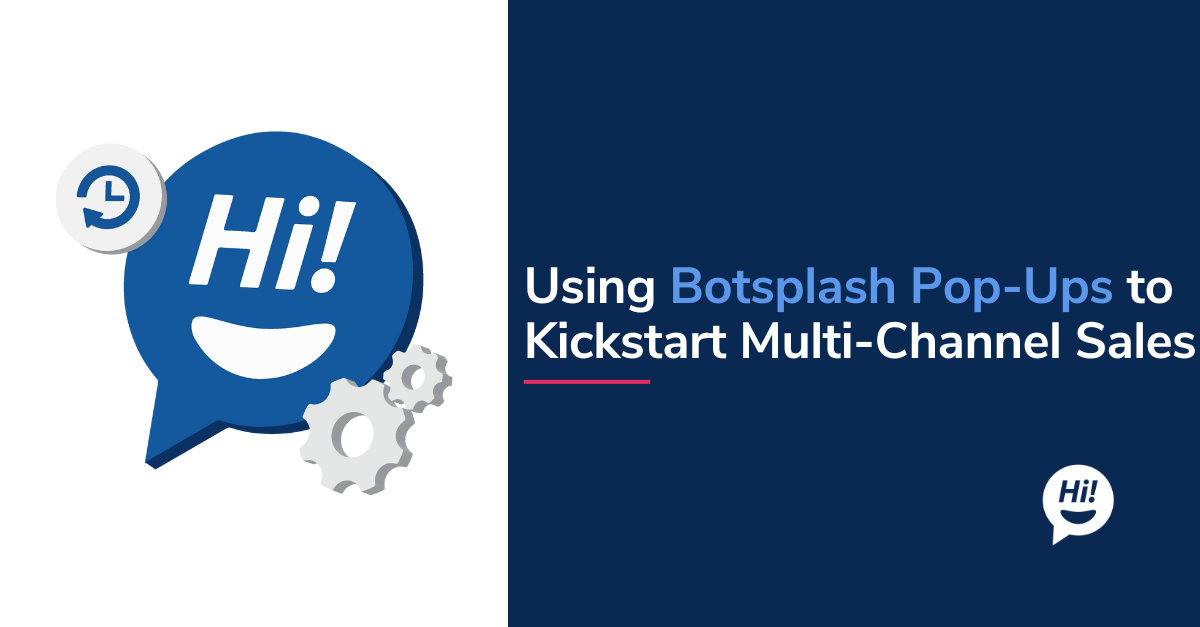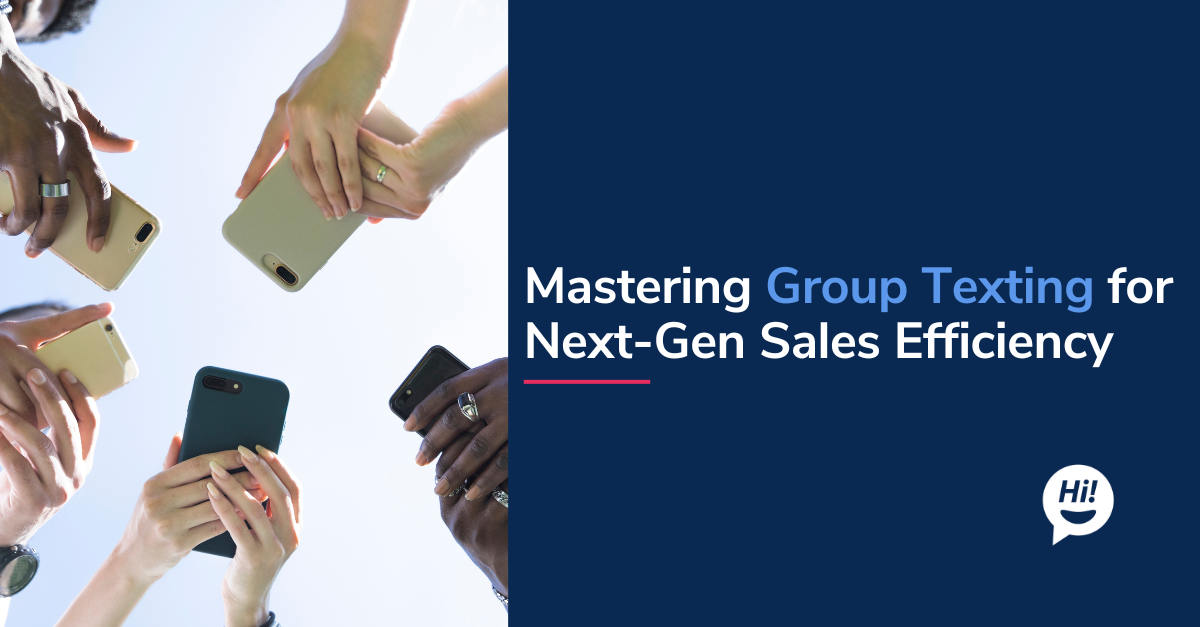In today's fast-paced digital world, where trends come and go in the blink of an eye, keeping up with the ever-evolving digital communication landscape can be daunting. Think of this blog post as your guide to the top trends shaping the world of digital communication in 2026.
Whether you're a seasoned marketer, a budding entrepreneur, or simply someone curious about the ever-changing digital world, this blog post has something for everyone. So, grab your virtual adventure gear, and let's embark on a journey to discover the secrets of effective digital communication!
Personalization: Tailoring Communication to Individual Needs
Consumers expect personalized experiences. So, it would be best to tailor your digital communications to each individual's needs, interests, and preferences. Use data from your website, email campaigns, and social media interactions to create personalized messages, product recommendations, and customer journeys.
Personalized communication can help you to:
- Build stronger relationships with your customers
- Increase customer engagement
- Improve customer satisfaction
By implementing personalization strategies, you can create a more engaging and practical digital communication experience for your customers. Doing so will help you to build stronger relationships, increase customer engagement, and improve customer satisfaction.
Here are some examples of how you can implement personalization strategies in your digital communications:
Use customer data to segment your audience: Divide your audience into smaller groups based on shared characteristics, such as demographics, interests, or purchase history. This will allow you to send more targeted messages to each group.
Use dynamic content to personalize your website and emails: Dynamic content changes based on the user's identity or behavior. For example, you could show a website visitor a product recommendation based on their browsing history.
Use feedback loops to refine your personalization strategies: Continuously collect customer feedback to see how they respond to your personalized communications. Use this feedback to make adjustments to your strategy as needed.
Predictive Analytics: Anticipating Customer Behavior
In digital communication, businesses must stay ahead of the curve to effectively engage with their target audience. Predictive analytics offers a powerful tool to anticipate customer behavior and make informed decisions about marketing strategies. Analyzing historical data and current trends allows businesses to uncover valuable insights into customer preferences, purchase patterns, and potential churn risks.
Predictive analytics empowers businesses to:
- Optimize marketing campaigns
- Personalize customer experiences
- Proactively address customer needs
Here are some practical applications of predictive analytics in digital communication:
Predicting customer purchase likelihood: Analyzing customer demographics, history, and browsing behavior can help businesses predict which customers are most likely to purchase.
Identifying customer churn risks: By analyzing factors such as customer engagement, support interactions, and satisfaction surveys, businesses can identify customers at risk of churn and take proactive measures to retain them.
Optimizing email marketing campaigns: Predictive analytics can help businesses determine the best time to send emails, the most compelling subject lines, and the most relevant content for specific customer segments.
Predictive analytics has revolutionized the way businesses approach digital communication. By harnessing the power of data and analytics, companies can gain a deeper understanding of their customers, anticipate their needs, and deliver personalized, engaging experiences that drive business growth and customer loyalty.
Privacy-First Approach: Respecting User Privacy and Building Trust
In the digital age, user privacy has become a paramount concern. As consumers become increasingly aware of how their data is collected, used, and shared, businesses face the challenge of balancing data collection with user privacy. A privacy-first approach to digital communication is essential for building trust and establishing long-lasting customer relationships.
A privacy-first approach entails:
Transparency and clarity in data collection practices: Communicate your data collection practices, including what data is collected, its use, and with whom it is shared. Obtain explicit consent from users before collecting their personal information.
Robust data security measures: Implement stringent data security measures to protect user information from unauthorized access, breaches, or misuse. Regularly update security protocols and educate employees on data security best practices.
Data minimization: Collect only the data necessary for specific purposes. Avoid collecting excessive data that is not essential for the functioning of your services or products.
User control and data access: Users can control their privacy settings, access their personal data, and request its deletion or correction.
Compliance with privacy regulations: Adhere to all applicable privacy regulations, such as GDPR and CCPA, to ensure lawful data handling practices.
Adopting a privacy-first approach protects user privacy, fosters trust and strengthens customer relationships. When users feel confident that their data is safe, they are likely to engage with your brand and share their information willingly.
Diversified Content Formats: Catering to Diverse Preferences
Given the attention-driven digital landscape, businesses must capture and retain audience interest with engaging and diverse content formats. Gone are the days of relying solely on traditional text-based content; today's consumers demand a variety of formats to suit their preferences and consumption habits.
Diversifying your content formats offers several benefits:
Increased audience reach: By catering to diverse preferences, you can expand your reach and attract a wider audience, including those who prefer visual or auditory content.
Enhanced engagement: Different content formats engage different audiences and help capture attention, hold interest, and encourage deeper engagement with your brand.
Improved content effectiveness: Matching your content format to your messaging and target audience can enhance the overall effectiveness of your communication.
Here are some practical content formats to consider:
- Visual content: Images, infographics, videos, and animated GIFs.
- Interactive content: Polls, quizzes, contests, and interactive infographics.
- Audio content: Podcasts, webinars, and voiceovers.
- Long-form content: In-depth articles, white papers, and case studies.
The key to successful content diversification lies in understanding your audience's preferences and consumption habits. Analyze your audience demographics, interests, and digital behavior to determine which formats most resonate with them.
Harnessing Influencers for Authentic Storytelling
Influencer marketing has emerged as a powerful tool for reaching and engaging target audiences. By partnering with authentic creators who align with their brand values and resonate with their target audience, businesses can leverage the reach and credibility of these influencers to amplify their messaging and drive meaningful connections.
Authentic influencer partnerships can provide several benefits:
- Enhanced brand credibility
- Expanded reach and engagement
- Targeted marketing
Effective influencer marketing requires a strategic approach such as:
- Carefully select influencers who align with your brand values, target audience, and overall messaging.
- Establish clear campaign objectives and expectations, ensuring both parties align on goals and metrics.
- Encourage authentic storytelling and collaboration, allowing influencers to express their unique voice and connect with their audience.
By partnering with authentic influencers and fostering meaningful collaborations, businesses can harness the power of influencer marketing to amplify their brand message, engage their target audience, and drive positive outcomes.
Multi-Channel Communication: Maximizing Reach and Engagement
Businesses must adopt a multi-channel communication strategy to reach and engage their target audience effectively. This approach involves utilizing a variety of communication channels, such as email, social media, website content, and targeted advertising, to create a consistent and cohesive brand experience.
A multi-channel approach offers several advantages:
- Expanded reach
- Targeted messaging
- Enhanced engagement
- Optimized resource allocation
To implement a successful multi-channel communication strategy, consider these factors:
Identify your target audience and their preferred channels: Understand where your audience spends their time online and choose channels that align with their preferences.
Develop a cohesive brand voice and messaging: Ensure consistent messaging across all channels to maintain brand identity and reinforce key messages.
Optimize content for each channel: Tailor content formats and messaging to suit each channel's specific characteristics and audience expectations.
Track and analyze channel performance: Regularly monitor channel performance metrics to identify areas for improvement and optimize resource allocation.
By adopting a multi-channel approach, businesses can maximize their reach, enhance engagement, and create a seamless brand experience that resonates with their target audience across the digital landscape.
Data-Driven Optimization: Measuring Performance and Refining Strategies
Data-driven optimization is essential for continuous improvement and success. By leveraging data analytics and key performance indicators (KPIs), businesses can measure the effectiveness of their digital communication efforts, identify areas for improvement, and refine their strategies to maximize results.
Data-driven optimization provides several benefits:
- Informed decision-making
- Improved campaign effectiveness
- Enhanced customer engagement
- Continuous improvement culture
To implement a data-driven approach, consider these steps:
Establish clear campaign goals and objectives: Define measurable goals and objectives for each campaign to track progress and measure success.
Identify relevant KPIs: Select appropriate KPIs that align with your campaign goals, such as website traffic, email open rates, social media engagement, and conversion rates.
Collect and analyze data: Utilize data analytics tools to collect, research, and visualize data from various sources, including website analytics, social media metrics, and email marketing platforms.
Identify insights and trends: Analyze data to uncover patterns and insights that inform campaign optimization decisions.
Test and refine strategies: Implement data-driven changes to your strategy, such as content adjustments, targeting refinements, and budget reallocation.
Continuously monitor and evaluate: You should regularly monitor campaign performance, evaluate the effectiveness of changes, and make ongoing adjustments as needed.
By embracing data-driven optimization, businesses can gain a deeper understanding of their digital communication performance, identify areas for improvement, and continuously refine their strategies to achieve their marketing goals and enhance customer engagement.
Embracing Emerging Technologies: Exploring New Frontiers of Engagement in 2026
The digital landscape constantly evolves, and emerging technologies offer exciting opportunities for businesses to enhance their communication strategies and create immersive, interactive experiences for their target audience. By staying ahead of the curve and exploring these emerging technologies, companies can stay relevant, engage new audiences, and establish a competitive edge.
Emerging technologies that hold promise for digital communication include:
- Augmented reality (AR): AR overlays digital content onto the real world, creating interactive experiences that blend the physical and digital realms.
- Virtual reality (VR): VR immerses users in a fully simulated digital environment, offering a captivating and engaging experience.
- Artificial intelligence (AI): AI can personalize customer interactions, analyze data for insights, and automate tasks to enhance communication efficiency.
- Chatbots: Chatbots provide 24/7 customer support, answer frequently asked questions, and guide customers through complex processes.
- Voice assistants: Voice assistants offer hands-free interaction, enabling users to control devices, access information, and purchase through voice commands.
To effectively integrate emerging technologies into their communication strategies, businesses should:
Identify clear use cases: Determine how emerging technologies can address specific business challenges or enhance customer experiences.
Ensure user-centricity: Prioritize user experience and design intuitive interfaces that are easy to use and navigate.
Respect user privacy: Implement robust data security measures and obtain explicit consent before collecting or using personal data.
Continuously experiment and refine: Emerging technologies constantly evolve, so businesses should embrace experimentation and refine their approaches as technologies mature.
By embracing emerging technologies, businesses can explore new frontiers of engagement, create innovative experiences, and differentiate themselves in the ever-evolving digital landscape.
Accessibility and Inclusivity: Embracing Diversity and Empowering All Users
Digital communication should be accessible and inclusive to all users, regardless of their abilities or circumstances. Embracing accessibility and inclusivity ensures that everyone can participate fully in the digital world and benefit from its opportunities.
Accessibility and inclusivity in digital communication involve:
- Designing for diverse abilities
- Using clear and concise language
- Providing alternative text for images
- Offering closed captions and transcripts for videos
- Ensuring compatibility with assistive technologies
Businesses can implement accessibility and inclusivity practices by:
Conducting user research: Involving users with disabilities in the design and testing process to identify and address accessibility barriers.
Using accessibility tools and guidelines: Utilize available tools and guidelines, such as the Web Content Accessibility Guidelines (WCAG), to ensure compliance with accessibility standards.
Regular auditing and testing: Regularly audit and test websites and applications for accessibility issues and make necessary improvements.
By embracing accessibility and inclusivity, businesses demonstrate their commitment to social responsibility, expand their reach to a broader audience, and create a more inclusive and equitable digital experience for all.
Community Building: Fostering Engagement and Loyalty
Fostering a strong community around your brand can be a powerful tool for driving engagement, loyalty, and word-of-mouth marketing. By creating a space where customers feel connected, valued, and heard, businesses can cultivate a loyal customer base likelier to engage with your brand, recommend products or services to others, and provide valuable feedback.
Effective community building involves:
- Creating dedicated spaces for interaction
- Encouraging active participation
- Responding promptly and proactively
- Valuing customer feedback
- Recognizing and rewarding participation
To successfully build a thriving community, businesses should:
Define your community goals: Clearly articulate what you want to achieve through your community, whether it's increasing brand awareness, building customer loyalty, or generating user-generated content.
Identify your target audience: Understand your target audience's demographics, interests, and online behavior to tailor your community strategy accordingly.
Choose the right platform: Select a community platform that aligns with your audience's preferences and usage habits, considering factors like accessibility, ease of use, and mobile compatibility.
Establish community guidelines: Set clear guidelines for respectful interactions, acceptable content, and moderation procedures to maintain a positive and inclusive environment.
Dedicate resources to community management: Commit the resources needed to actively manage your community, engage with members, and ensure a consistent and positive experience.
By fostering a strong community around your brand, businesses can cultivate loyal customers, amplify their brand voice, and create a lasting competitive advantage in the digital age.
Conclusion: Navigating the Dynamic Digital Landscape with Confidence
The ever-evolving digital landscape presents challenges and opportunities for businesses seeking to communicate with their target audience effectively. By embracing the trends and strategies outlined in this blog post, companies can gain a competitive edge and confidently navigate the digital world.
Remember, effective digital communication is an ongoing process that requires continuous adaptation and innovation. Stay ahead of the curve, embrace experimentation, and prioritize your audience's needs to establish meaningful connections and achieve your marketing goals.
If you have any questions regarding how our platform can help, then feel free to Schedule a Demo!
To learn more about Botsplash click the button below to schedule a demo with our team.













